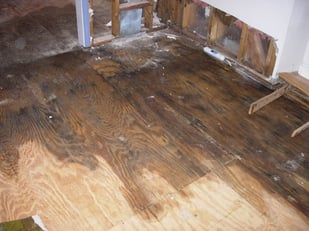Efficient Water Mitigation Techniques You Required to Know
Water damage can be a costly and disruptive issue for residential or commercial property owners, making it important to be well-versed in reliable water mitigation methods. From early discovery and examination to reliable water removal approaches and thorough drying out methods, there are important actions to take in mitigating water damage.

Early Detection and Inspection
Early detection and evaluation are essential actions in the procedure of water mitigation to recognize and attend to prospective sources of water damages promptly. By performing regular assessments of pipes systems, devices, and architectural elements, water mitigation specialists can proactively identify locations vulnerable to leakages, condensation, or flooding. Through detailed assessments using innovative modern technology such as wetness meters and thermal imaging video cameras, professionals can find surprise water breach that may not be right away noticeable to the naked eye. Determining these concerns early can prevent additional escalation of water damages, ultimately saving time and resources in the mitigation procedure.
Additionally, very early detection enables swift activity to be absorbed drying affected areas and applying essential repair work to stop mold and mildew development, architectural degeneration, and various other long-lasting effects of water damages. Prompt intervention not just reduces the immediate influence of water invasion but additionally aids in maintaining the stability and safety of the home in the lengthy run. Focusing on very early detection and inspection as fundamental elements of water mitigation techniques is vital for efficient damage control and remediation initiatives.
Reliable Water Removal Methods
Detection and assessment are crucial action in any water reduction process, laying the foundation for effective water removal techniques to promptly get rid of excess water from affected areas. As soon as the level of water damages is evaluated, it is important to use effective extraction techniques promptly. Water extraction can be attained through different techniques, consisting of making use of powerful pumps, damp vacuums, and dehumidifiers.
Professional water mitigation groups usually use submersible pumps to rapidly remove big amounts of water from the properties. These pumps are capable of extracting water at a rapid speed, minimizing the threat of additional damages to the residential or commercial property. Wet vacuums are likewise commonly used to target smaller sized locations or hard-to-reach spaces where standing water persists.
Furthermore, dehumidifiers play an essential role in the water removal process by lowering wetness degrees in the air and accelerating the general drying time - water damage restoration company round lake ny. By incorporating these removal approaches tactically, water reduction specialists can successfully extract water, reduce damages, and protect against mold development, inevitably recovering the afflicted location to its pre-loss condition
Thorough Drying Strategies
To make certain extensive water damages reduction, extensive drying out techniques are vital in removing residual dampness and avoiding prospective structural problems. After water removal, the focus moves to drying out the affected areas entirely.
In cases of water damages, permeable materials like drywall and carpeting can trap wetness, bring about mold development and architectural weakening if not adequately dried. To address this, experts might make use of specialized devices such as dampness meters to gauge dampness degrees within address products, ensuring complete drying out. In addition, the removal of baseboards or drilling small openings in wall surfaces might assist in drying in wall cavities where dampness can stick around unnoticed.
Mold And Mildew Avoidance and Removal
Following the thorough drying strategies in water reduction, the focus currently changes towards resolving mold prevention and removal to safeguard versus prospective wellness hazards and architectural damages - flooded basement cleanup ballston spa ny. Mold can swiftly create in locations influenced by water damage, posing severe wellness risks and jeopardizing the stability of the structure.
It is crucial to deal with mold and mildew concerns immediately and efficiently to prevent further damages and make sure the security of occupants. By implementing these mold avoidance and removal methods, the risks linked with water damages can be considerably reduced.
Architectural Repair Work and Restoration

Painting wall surfaces, changing flooring, and resolving any noticeable water stains are typical techniques. Additionally, resolving any remaining dampness concerns and making certain appropriate air flow can aid avoid future structural damage and mold development.
Verdict
In conclusion, efficient water reduction strategies such as very early detection, efficient water extraction, detailed drying out, mold prevention, and architectural repair service are essential in minimizing damage and restoring page impacted areas (flooded basement cleanup ballston spa ny). By adhering to these steps vigilantly, homeowner can minimize the influence of water damages and protect against more concerns such as mold and mildew development. It is essential to act promptly and employ these techniques to ensure a successful water reduction process
Water damage can be a pricey and disruptive problem for building proprietors, making it vital to be skilled in efficient water mitigation techniques. From very early discovery and assessment to effective water removal approaches and complete drying techniques, there are essential actions to take in mitigating water damages.Very early discovery and evaluation are essential steps in the procedure of water mitigation to identify and resolve prospective sources of water damages promptly.Discovery and assessment are important actions in any type of water mitigation procedure, laying the foundation for reliable water extraction methods to promptly eliminate excess water from affected locations.In conclusion, reliable water mitigation strategies such as early discovery, effective water removal, complete drying, mold and mildew prevention, and architectural fixing are important in minimizing damages more and restoring influenced locations.